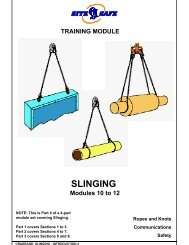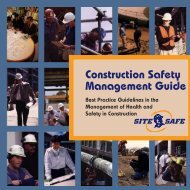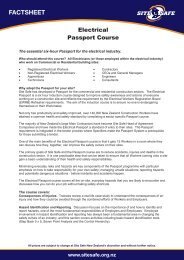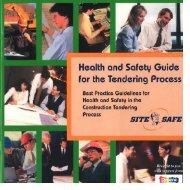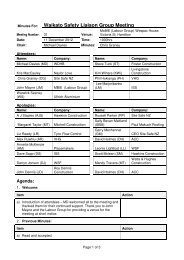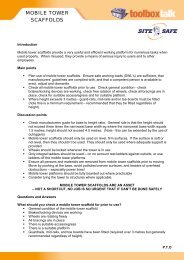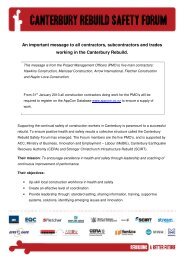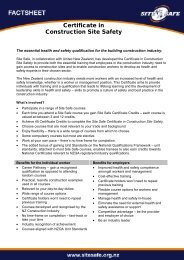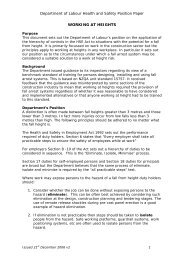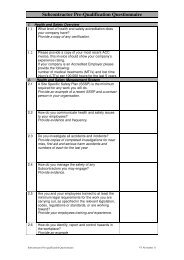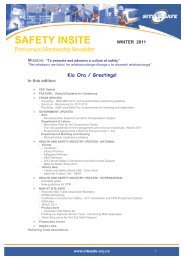Create successful ePaper yourself
Turn your PDF publications into a flip-book with our unique Google optimized e-Paper software.
GOOD SLINGING PRACTICE<br />
BASIC RULES ... 6<br />
6.1. KNOW HOW TO USE DUNNAGE.<br />
ALWAYS use dunnage to allow the slings to be removed after lowering the load<br />
into place.<br />
Use the "fifth-point" rule as shown.<br />
The common materials for dunnage are timber offcuts, which are generally fine.<br />
NEVER use hollow light-wall tubes or pipes which could collapse under the<br />
load weight, and NEVER use material which is to be used on the job - the load<br />
could damage them beyond use.<br />
1/5 length<br />
NO!!<br />
NEVER use dunnage on its edge.<br />
This is unstable, and the load could<br />
easily shift and drop.<br />
CRANEAGE - SLINGING: BASICS<br />
3/5 length<br />
Note dunnage is kept aligned.<br />
1/5 length<br />
Example of simple but effective<br />
dunnage for storage of pipes or<br />
reinforcing bars. The inclined sides<br />
prevent the material from rolling about.




